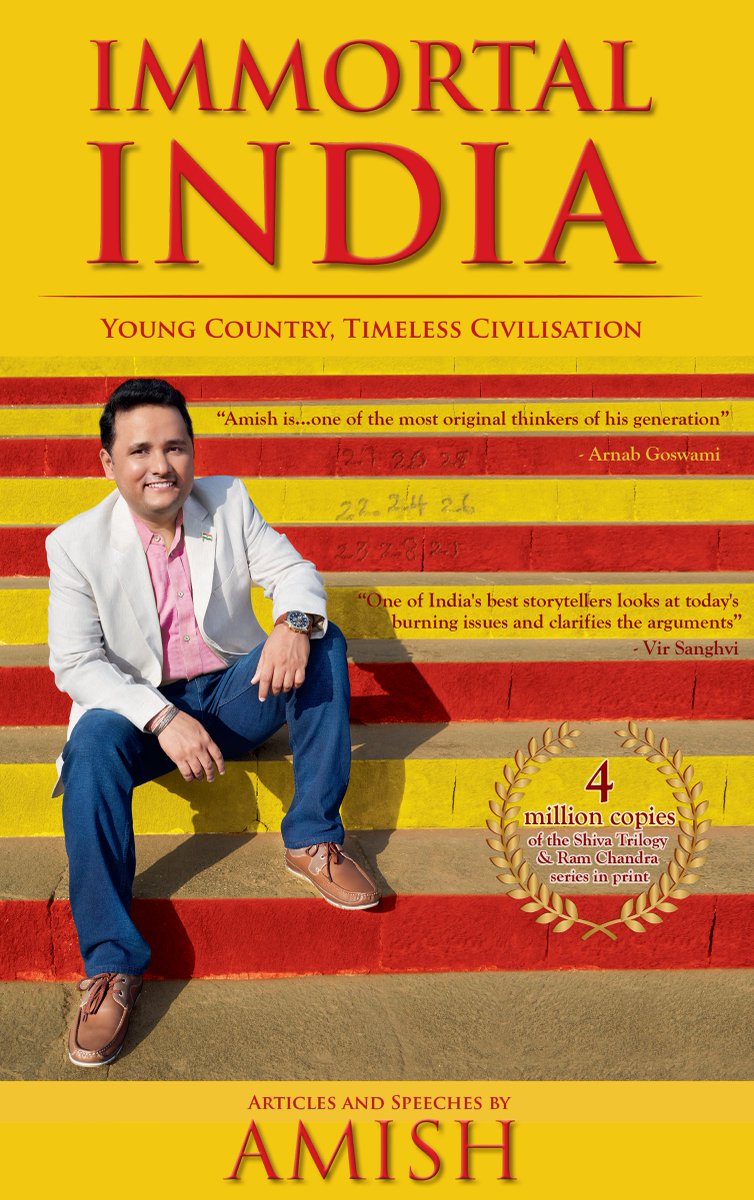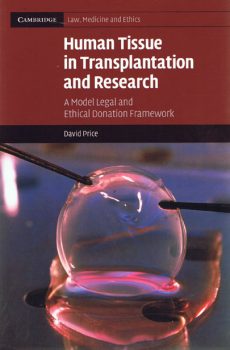
Human tissue in transplantation and research
3,290.00₹ 1,800.00₹
Deficiencies and shortfalls in the supply of human organs for transplantation and human tissue for research generate policy dilemmas across the world and have often given rise to major and deleterious controversies, such as those relating to organ and tissue retention practices following post-mortem examination. They also create an environment in which illegitimate commercial activities flourish. At the same time, patients are denied the therapy they desperately require and researchers are impeded from carrying out vital work into the causes of, and efficacious treatments for, major illnesses and diseases. David Price sets out a clear and integrated legal and policy framework which emanates from the tissue source but protects the interests of donors and relevant professionals through tailored property entitlements, but without presupposing rights to trade in ‘original’ materials.
- Outlines an integrated and coherent donation framework relating to human tissue for the purposes of transplantation and research, which will bring clarity to the policy debates and stimulate reform proposals
- Integrates a ‘property framework’ within the donation model, which will provide better protection for the interests of donors of tissue and professional users
- Weighs the interests of all the parties involved and feeds this in to a policy objective and an appropriate supporting infrastructure linked to consent
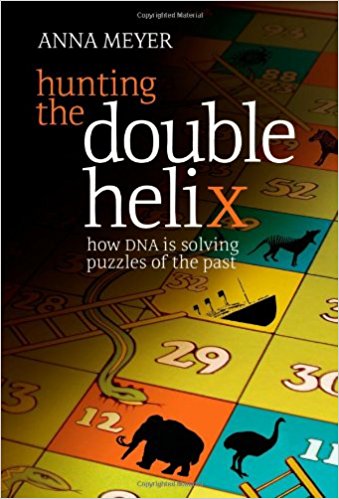
hunting the double helix
250.00₹ 220.00₹
In this book the author provides a fascinating glimpse into one of the newest and most intriguing areas of scientific research. Any DNA that still exists in the remains of living things after their death is called ‘ancient DNA’. But the death doesn’t have to be recent – the DNA could be from an organism that died a few days ago, or from an extinct species, such as the Australian thylacine or the New Zealand moa, or from an animal that died in the last Ice Age, such as the mammoth. The study of ancient DNA has been the key to some of the most amazing discoveries. There’s a whole smorgasbord of stories to sample – tales of murder, deadly disease, and mysterious disappearances, and even the origins of human life. Could we re-create a mammoth or a thylacine? Could ‘Jurassic Park’ ever be a reality? Were the Neanderthals our ancestors? What caused the black death? What really happened to the Russian Royal Family? Did Anastasia survive the Russian revolution? Could the unnamed victims of the Titanic be returned to their families? Ancient DNA has been found in a wonderful range of sources, and has been used to answer these and other baffling questions.
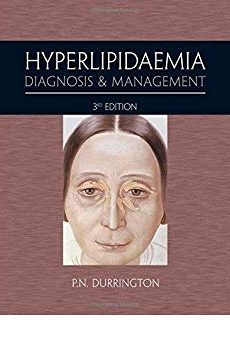
Hyperlipidaemia: Diagnosis & Management
9,588.00₹ 5,200.00₹
The third edition of this well-received text provides a state-of-the-art treatise on modern clinical practice relating to hyperlipidaemia and lipoprotein disorders, conditions responsible for a huge amount of morbidity and mortality in Western countries and, increasingly, the developing world. The clinical evidence underlying the treatment of hyperlipidaemia has burgeoned since the second edition published in 1994, with the publication of the results of several clinical trials on statin drugs, and the subsequent appearance of national and international guidelines for cholesterol lowering in coronary prevention. There has also been considerable development in the definition of cardiovascular risk, and the methodology for identifying high-risk patients.
All of these aspects are addressed fully in the new edition. In addition, the book offers helpful summaries of the background biochemistry of lipoprotein metabolism and atherosclerosis where relevant, putting the subject in the context of its pathophysiology and epidemiology. The text relating to clinical aspects has a strong evidence base, reviewing, in particular, areas of uncertainty and controversy.
Drawing on the wealth of experience of the author, and representing his widely respected views on the subject, readers will find this comprehensive, well-referenced and accessible book invaluable.
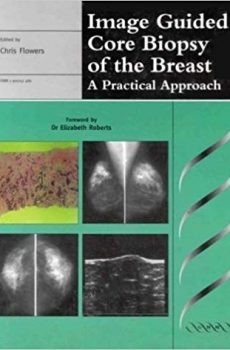
Image Guided Core Biopsy of the Breast: A Practical Approach
4,500.00₹ 1,990.00₹
Image Guided Core Biopsy of the Breast is the first book to truly reflect this multidisciplinary approach and to describe, in a practical and clinically relevant way, the principles and practices of core biopsy techniques. It shows this type of biopsy can be used to improve preoperative diagnostic rates in a cost-effective manner and, whilst discussing all currently used protocols in detail, it focuses on the simpler, “low-tech” lateral stereotactic needle guide.
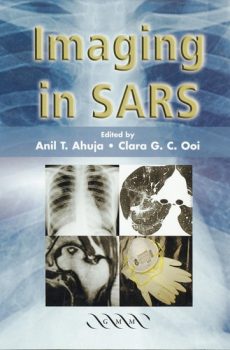
Imaging in SARS
8,370.00₹ 2,000.00₹
Severe acute respiratory syndrome (SARS) is a devastating disease and although the virus would appear to have been contained, it is clear that the impact it has had around the world, and could have again in the future, is immense. Hong Kong has been significantly impacted in the recent SARS outbreak, and clinicians and researchers alike have gained a lot of experience in dealing with the disease at short notice. This new book aims to be a state-of-the art update on SARS, with particular reference to imaging, which plays a crucial role in the diagnosis, management and follow-up of patients with the disease (it is widely accepted that SARS patients cannot be managed without imaging and it is included in the WHO’s own list of diagnostic criteria for the disease). The book will also provide a perspective on the treatment and experience of the disease outside Hong Kong.
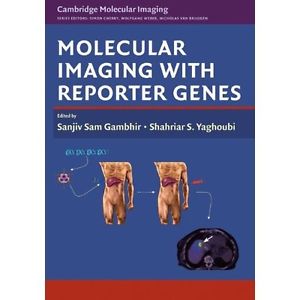
Imaging of Vertebral Trauma
6,930.00₹ 2,590.00₹
The imaging methods used to evaluate patients with suspected vertebral injuries have undergone radical changes in the past decade, the most significant being the ascendancy of computed tomography (CT) to become the primary investigative modality. Issues such as high radiation dose associated with CT studies and health care reform and cost containment also have a significant impact on clinical decision-making. This new edition of the classic landmark text for vertebral trauma imaging provides an in-depth discussion on the indications and methods of imaging the spine based on currently available clinical evidence. Every chapter has been extensively revised and the illustrations represent state-of-the-art imaging. A completely new chapter on pediatric injuries has been added. Imaging of Vertebral Trauma, third edition, is an invaluable and essential tool in the assessment of any patient with suspected vertebral or spinal cord injury.
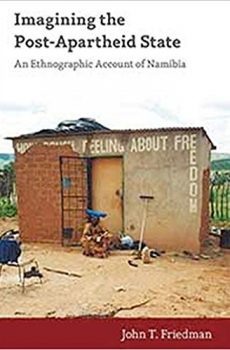
Imagining the Post-Apartheid State: An Ethnographic Account of Namibia
8,400.00₹ 2,200.00₹
In northwest Namibia, people’s political imagination offers a powerful insight into the post-apartheid state. Based on extensive anthropological fieldwork, this book focuses on the former South African apartheid regime and the present democratic government; it compares the perceptions and practices of state and customary forms of judicial administration, reflects upon the historical trajectory of a chieftaincy dispute in relation to the rooting of state power and examines everyday forms of belonging in the independent Namibian State. By elucidating the State through a focus on the social, historical and cultural processes that help constitute it, this study helps chart new territory for anthropology, and it contributes an ethnographic perspective to a wider set of interdisciplinary debates on the State and state processes.

In the Shadows of a Fallen Wall
1,390.00₹ 995.00₹
Growing up, what Sanford Tweedie knew about East Germany was basically . . . nothing. West Germans were our friends; East Germans, the enemy. In 2000, somewhat better informed, Tweedie took advantage of a Fulbright Scholarship to move his family to the eastern German town of Erfurt for the academic year. Far from home and the familiar, with temporary status and a tenuous grasp of the language, he and his wife were curious to see how they would function shorn of all the rules that governed their daily lives—housing, food acquisition, transportation, and even basic communication. As soon as their taxi delivered them to their grim tan and concrete Soviet-vintage apartment building, they knew their education had begun.
Learning about life in the former East Germany, amid the feverish embrace of Western culture and the tenacious legacy of a totalitarian past, Tweedie comes to understand the deeper cultural assumptions through which Americans view the larger world. Part travelogue, part history, part cultural critique, all thoroughly engrossing, the story of his yearlong experience is one of dislocation and accommodation, making a German town his own and now ours.

In Twilight and in Dawn
2,800.00₹ 995.00₹
When New Zealand-born and Oxford-educated anthropologist Diamond Jenness set aside hopes of building a career in the South Pacific to join Vilhjalmur Stefansson’s Canadian Arctic Expedition, he had little idea of what lay ahead. But Jenness thrived under the duress of that transformational experience: the groundbreaking ethnographic work he accomplished, recounted in People of the Twilight and in Dawn in Arctic Alaska, proved to be a lasting contribution to twentieth-century anthropology, and the foundation of a career he would devote to researching Canada’s first peoples. Barnett Richling draws upon a wealth of documentary sources to shed light on Jenness’s tenure with the Anthropological Division of the National Museum of Canada – a forerunner of the Canadian Museum of Civilization – during which his investigations took him beyond the Arctic to seven First Nations communities from Georgian Bay to British Columbia’s interior. Jenness was renowned as a pre-eminent scholar of Inuit culture, but he also stood out for the contributions his field work made to linguistics, ethnology, material culture, and Northern archaeology. His story is also an institutional one: Jenness worked as a public servant at a time when the federal government spearheaded anthropological research, although his abiding commitment to the first peoples of his adopted homeland placed him at odds with Ottawa’s approach to aboriginal affairs. In Twilight and in Dawn is an exploration of one man’s life in anthropology, and of the conditions – at the museum, on the reserves, in society’s mainstream, and in the world at large – that inspired and shaped Jenness’s contributions to science, to his profession, and to public life. An informative study of the evolution of a discipline focused through the life of one of its leading practitioners, In Twilight and in Dawn is an illuminating look at anthropological thought and practice in Canada during the first half of the twentieth century.
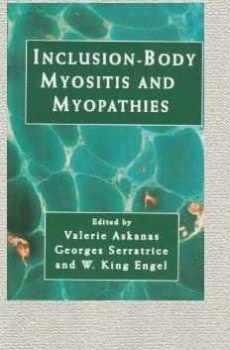
Inclusion-Body Myositis and Myopathies
13,995.00₹ 3,695.00₹
Inclusion-body myositis (IBM) is now understood to be an important degenerative muscle disease. The sporadic type (s-IBM) is probably the most common muscle disease among those ailments that strike first in adulthood (particularly people over 50). The hereditary type (h-IBM) affects younger patients. This book is devoted entirely to both s-IBM and h-IBM. Contributors discuss what is understood about the basic scientific foundations of IBMs, the varied aspects of the pathology of IBMs, and the application of clinical treatments. One particular emphasis of the book is on the hereditary aspects of IBM and genetic predispositions to the disease. This comprehensive review should greatly interest those involved with research and treatment of neuromuscular disease, especially those in neurology, rheumatology, and physical medicine.

Inclusionary Rhetoric Exclusionary Practices
8,400.00₹ 1,890.00₹
Migration and multiculturalism are hotly discussed in public debates across Europe. Whereas ethnographic research has begun to examine the Right in this context, the Left remains largely unexplored. Drawing on fieldwork conducted in Bologna – the show-case city of the Italian Left – this book provides fresh perspectives on how the contemporary Left “frames” these issues in practice and how such framing has changed in recent decades. By focusing on the official rhetoric grassroots discourses, policy and civil societal practices of the Left as well as on the immigrants’ own views, this book timely offers a comprehensive, vivid, and critical account of changing ideas about ethnicity, class, identity and difference in “progressive” politics and of the implications that such ideas have for the incorporation of migrants in Europe.
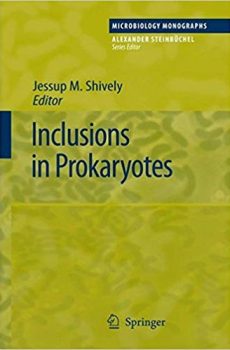
Inclusions in Prokaryotes
16,000.00₹ 4,990.00₹
The new series “Microbiology Monographs” begins with two volumes on intracellular components in prokaryotes. In this first volume, “Inclusions in Prokaryotes”, the components, labeled inclusions, are defined as discrete bodies resulting from synthesis of a metabolic product. Research on the biosynthesis and reutilization of the accumulated materials is still in progress, and interest in the inclusions is growing. This comprehensive volume provides historical background and comprehensive reviews of eight well-known prokaryotic inclusions.
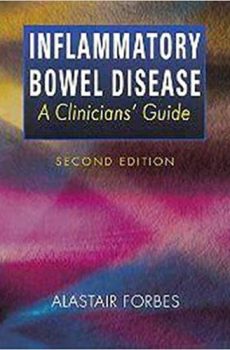
Inflammatory bowel disease
7,990.00₹ 1,890.00₹
The study of inflammatory bowel disease is one of the most rapidly changing fields within gastroenterology. The revision of this successful title highlights the radical changes in therapy which are poised to affect clinical practice – particularly with the release of therapeutic agents (such as TNF antibodies). Clinicians’ Guide to Inflammatory Bowel Disease presents current knowledge in a compact and user-friendly format allowing physicians who treat gastrointestinal disease to take full advantage of up-to-date research information whilst emphasizing clinical guidance and therapeutics.
This second edition has been extensively revised and several chapters have been completely rewritten. The book follows the ‘Clinicians’ Guide’ format and is written in a digestible style with an attractive layout. In addition to rigorous revision of the text – the provision of new pictorial material and clinical algorithms will aid physicians’ knowledge. This revised version covers all the important aspects of inflammatory bowel disease whilst highlighting new developments in therapeutics and immunological manipulation.
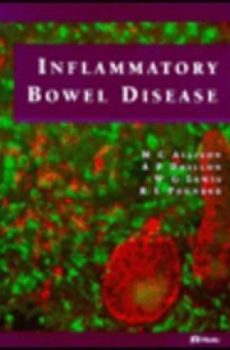
Inflammatory Bowel Disease
6,190.00₹ 3,000.00₹
This book offers gastroenterologists, surgeons, and general hospital doctors an immediate source of information regarding the epidemiology, genetics, immunology, etiology, and pathogenesis of inflammatory bowel disease. Focusing on the two most significant conditions, Crohn’s disease and ulcerative colitis, this book describes clinical signs, disease activity and progress, recurrence, complications and nutritional aspects. It discusses up-to-the-minute drugs, as well as medical and surgical treatment.
… Emphasizes differential diagnosis. … Includes hundreds of color illustrations to aid in recognition of signs and symptoms. … Devotes an entire chapter to the disease in childhood. … Discusses important clinical signs appearing in other areas of the body, including the mouth and skin. … Uses tables, figures, and diagrams to quickly present essential information.
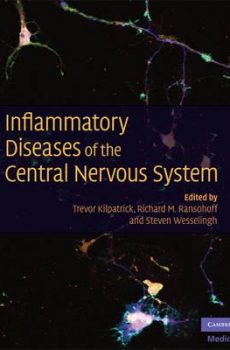
Inflammatory Diseases of the Central Nervous System
10,500.00₹ 4,700.00₹
Interactions between the immune and nervous systems are involved in many disease processes. Modulation of inflammation can provide an important opportunity to enhance regeneration within the central nervous system. This authoritative book defines the key cellular players in mounting an inflammatory response and highlights critical factors in the target organ that influence the nature of that response and its capacity either to damage or protect the brain. Several key clinical areas are highlighted – particularly autoimmune diseases of the nervous system including multiple sclerosis, as well as microbiological and traumatic challenges; the book therefore provides both a summary of the basic science background as well as practical, clinical-friendly guidelines to management. The book will be of interest to a wide range of physicians, including neurologists, neurosurgeons, neurorehabilitationists, infectious disease physicians, and clinical neuroscientists, as well as neuroscientists and immunologists.

INNER ENGINEERING – A yogi’s guide to joy
299.00₹
Inner Engineering is a fascinating read, rich with Sadhguru’s insights and his teachings. If you are ready, it is a tool to help awaken your own inner intelligence, the ultimate and supreme genius that mirrors the wisdom of the cosmos’-Deepak Chopra
In his revolutionary new book, visionary, mystic and yogi Sadhguru distils his own experiences with spirituality and yoga and introduces the transformational concept of Inner Engineering. Developed by him over several years, this powerful practice serves to align the mind and the body with energies around and within, creating a world of limitless power and possibilities. Inner Engineering is your own software for joy and well-being.
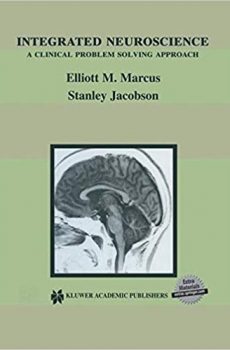
Integrated Neuroscience: A Clinical Problem Solving Approach
9,900.00₹ 4,690.00₹
This textbook takes as a premise that, in order to make intelligent diagnosis and provide a rational treatment in disorders of the nervous system, it is necessary to develop the capacity to answer the basic questions of clinical neurology:
(1) Where is the disease process located?
(2) What is the nature of the disease process?
The purpose of this textbook is to enable the medical student to acquire the basic information of the neurosciences and neurology and most importantly the ability to apply that information to the solution of clinical problems. The authors also suggest that hospital trips be a part of any Clinical Neurosciences Course so that the student can put into actual practice what he has learned in the classroom.
We believe that this textbook will be of value to the student throughout the four years of the medical school curriculum. Medical, psychiatry and neurology residents may also find this text of value as an introduction or review.
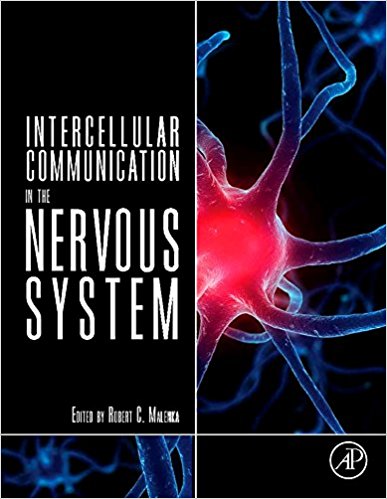
INTERCELLULAR COMMUNICATION IN THE NERVOUS SYSTEM – 1e
4,800.00₹ 4,500.00₹
Intercellular communication is part of a complex system of communication that governs basic cellular activities and coordinates cell actions. The ability of cells to perceive and correctly respond to their environment is the basis for growth and development, tissue repair, and immunity as well as normal tissue homeostasis. Errors in cellular information processing are responsible for diseases such as cancer, autoimmunity, diabetes, and neurological and psychiatric disorders. There is substantial drug development concentrating on this and intercellular communication is the basis of much of neuropharmacology. By understanding cell signalling, diseases may be treated effectively and, theoretically, artificial tissues may be yielded. Neurotransmitters/receptors, synaptic structure and organization, gap junctions, neurotrophic factors and neuropeptides are all explored in this volume, as are the ways in which signalling controls neuroendocrinology, neuroimmunology and neuropharmacology. Intercellular Communication in the Nervous System provides a valuable desk reference for all scientists who consider signalling.
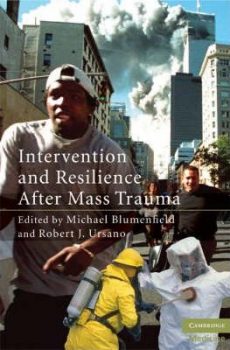
Intervention and Resilience after Mass Trauma
6,300.00₹ 1,820.00₹
Traumatic events and disasters are an unexpected but not uncommon aspect of our lives. This book describes the field of disaster mental and behavioral health and is directed at fostering resilience and recovery, whilst recognizing that such events lead to mental illness, distress and health risk behaviors, all of which should be planned for and considered in early interventions. Psychological first aid is discussed, as well as the potential role of psychopharmacology and the relevance of culture in the setting of the disaster. This is essential reading for clinicians who might be involved in a mass trauma situation, along with educators and students in the increasing numbers of educational programs relating to the preparation and response to mass trauma and disaster situations. It should be read by policy makers and public health specialists who must understand the impact of disaster on the person and the systems in which we live.









